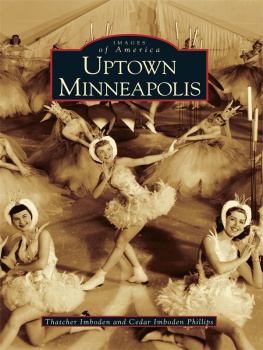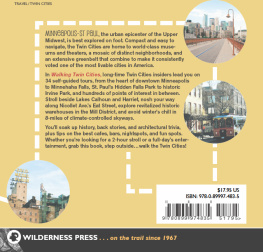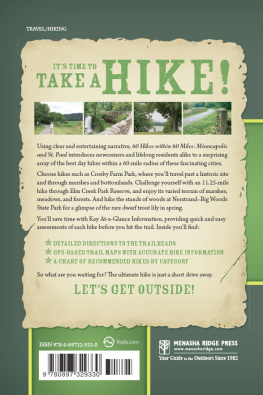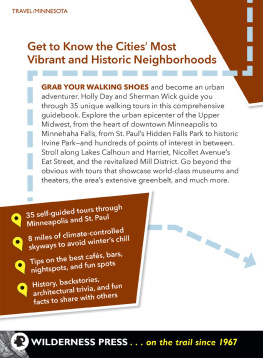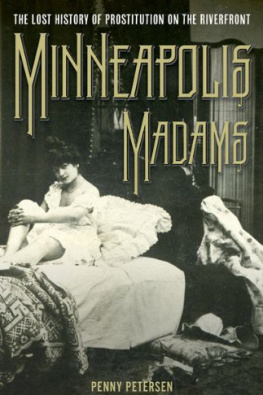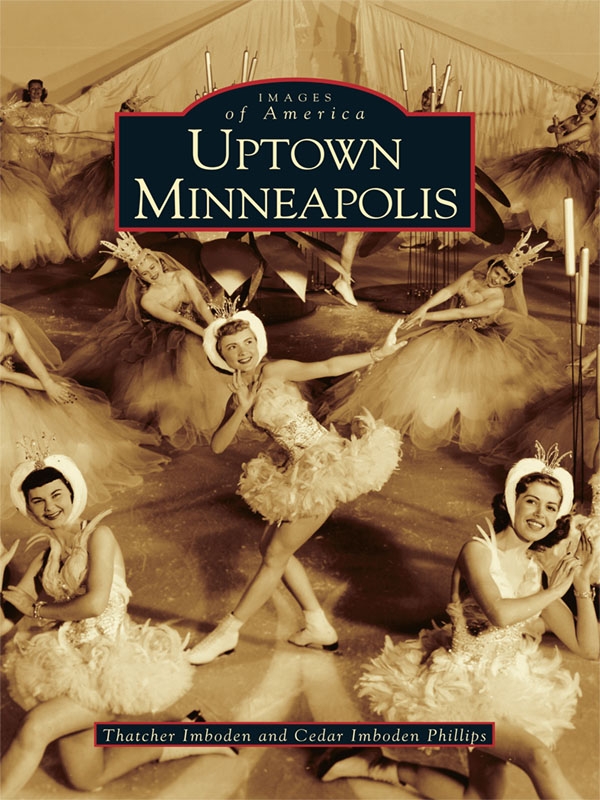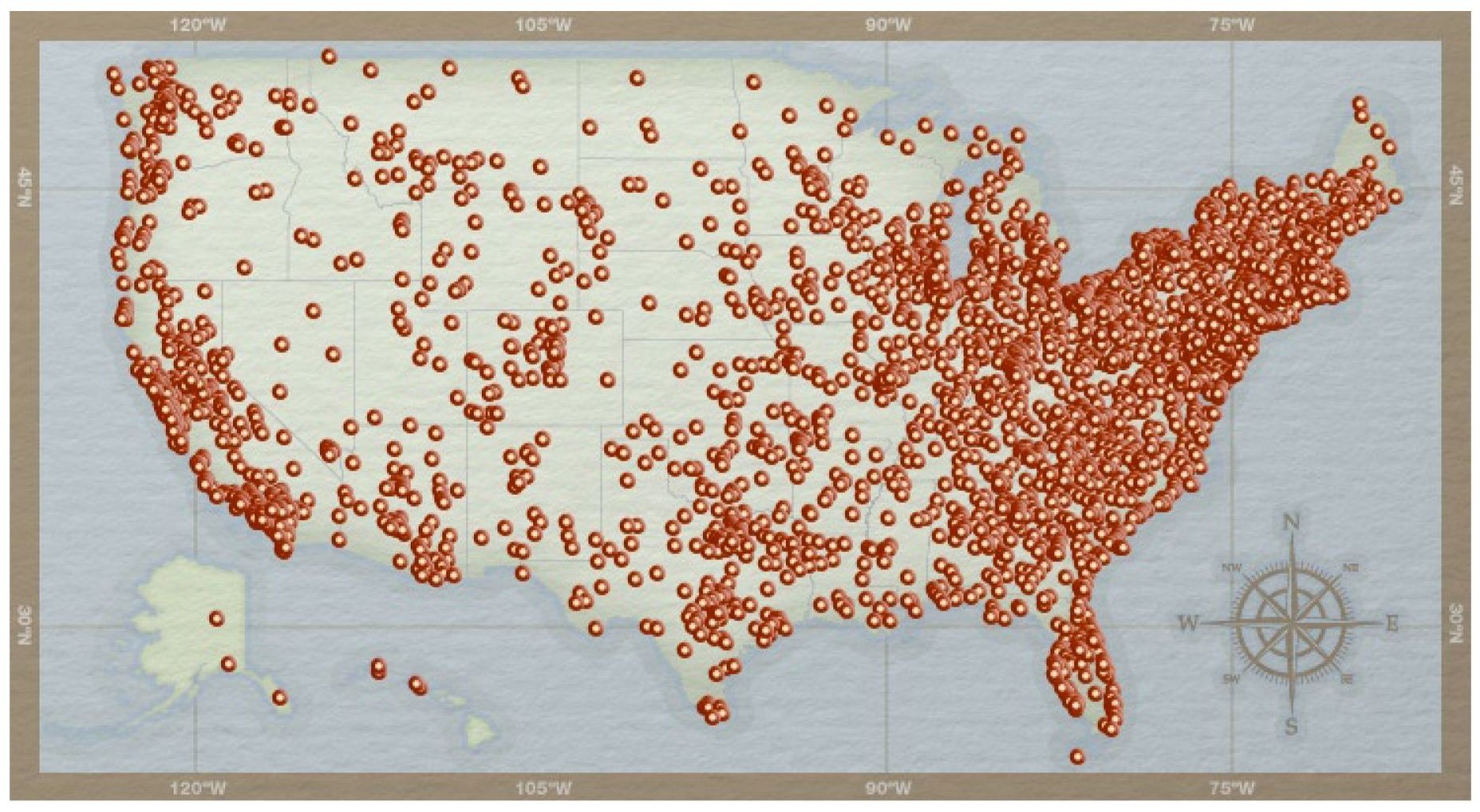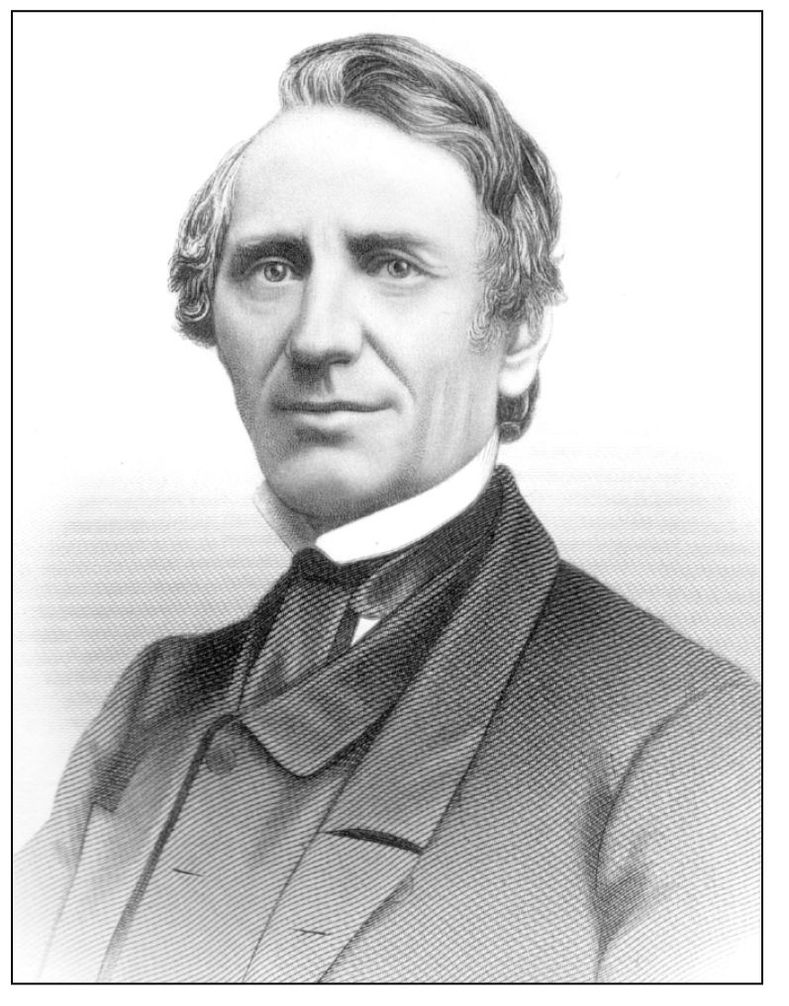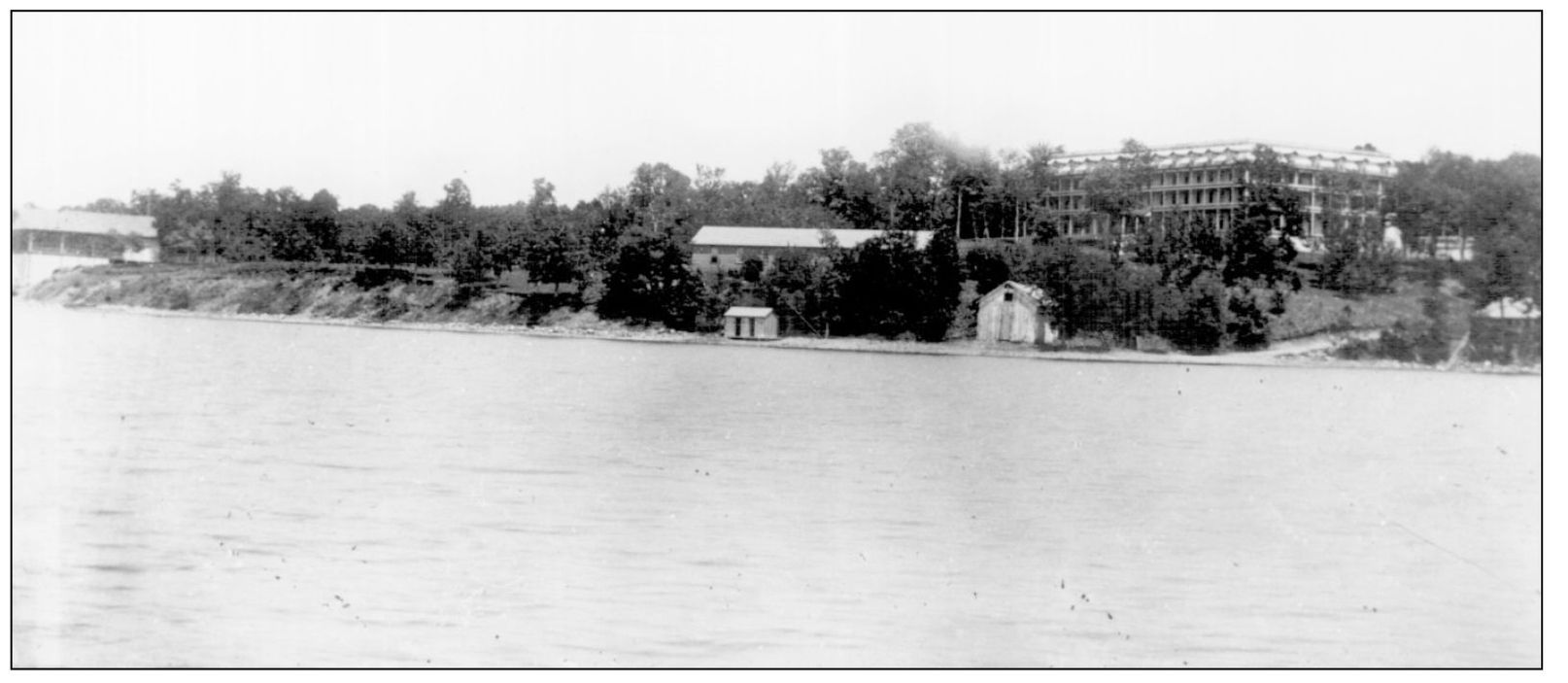ACKNOWLEDGMENTS
Compiling a book of this nature required the help of many individuals. We wanted to use photographs drawn from the best of both private and public collections, and are grateful for the assistance and generosity of so many people, organizations, and businesses. The following people made this book into a reality and we could not have done it without their help. The staff at the Hennepin History Museum, with special thanks to Todd Mahon, Susan Larson-Fleming, and Jack Kabrud, allowed us access to their exhaustive photo archives. Similarly, the friendly and ever-helpful members of the Minneapolis Public Librarys Special Collections department deserve special thanks, especially librarians JoEllen Haugo and Wendy Adamson. Photographs also come from the collections of both the Minnesota Historical Society and the Smithsonian American Art Museum. Local businesses, organizations, and individuals were generous with their time and photographs. Michael Legeros, an Arcadia author himself, helped us with photos, research, and general advice. Charles Zeke Koehler provided photographs and memories, as did Clarence Nelson. We would also like to thank, in no particular order, William Morton, Joyce United Methodist Church, the Brave New Workshop, Barbara Lee, Tres Lund, Lunds Foods, Alison Lindburg, Michael Lander, Scott Engel, Tania Fritz, Warner Properties, Cindy Fitzpatrick, the Uptown Association, Steve Granger, the Minneapolis Park and Recreation Board, the Facilities Department of the Minneapolis Public Schools, Neal Frank, Temple Israel, John Legeros, Terry and Tom Olson, Mary Ann Knox, Patricia Pennington Idstrom, Tian Barbatsis Dayton, Barbara Brooks, Dick Lindskoog, the Extra Alarm Association of the Twin Cities, Meg Tuthill, Joseph Melzer, and Tom Neiman. Our editor Maura Brown was a great help from start to finish. Our parents, Durant and Cheryl Imboden, and brother Anders were always enthusiastic and encouraging. Thatcher would also like to thank Melissa Kusmich for her support as well as technical assistance. Cedar wants to thank her husband Andrew for his steady encouragement and patience.
Find more books like this at
www.imagesofamerica.com
Search for your hometown history, your old
stomping grounds, and even your favorite sports team.
One
DEVELOPMENT AND THE LAKES
Uptowns lakes, Lake Calhoun in particular, have always attracted residents and visitors. Local Dakota called the eastern shore of Lake Calhoun home during the 1830s. Later in the century the lake became a popular tourist destination. The lake abounds in fish and is a favorite pleasure ground for the officers of Fort Snelling, wrote an 1851 visitor. The lakes possessed every desirable advantage besides beauty, wrote another nineteenth-century observer, they were not only full of the finest fish, but in the adjacent woodlands every kind of game abounded, and a great variety of wild fruits grew in profusion. By the 1870s, large resort hotels had developed along the shores of Lake Calhoun. Streetcars made the lakes and their attractions easily accessible to people from across the Twin Cities.
In 1883 the recently-formed Minneapolis Park Board began actively purchasing the land ringing the lakes. Over the course of several decades, they completed a series of ambitious dredging projects that created new shorelines with beaches for Lake Calhoun and a dramatic makeover removing swamps and two islands in Lake of the Isles. Today, Lakes Calhoun and Isles are integral parts of the citys urban park system. Although their shapes and forms have been drastically altered over the years, Lake Calhoun and Lake of the Isles retain their long-time appeal to residents and visitors alike.
The Dakota village of Eatonville, located on the eastern shore of Lake Calhoun, was established in 1829 with the cooperation of Dakota chief Cloudman and Fort Snellings Indian Agent, Major Taliaferno. The United States was actively encouraging local Indian tribes to shift to an agricultural lifestyle, and the federal government provided Cloudmans village with goods and assistance. Not all local Dakota approved of the village, and Eatonville was established with only 12 families. Several years later the villages population reached 125 and its residents had raised nearly 1,000 bushels of corn. Shown here is the village in the summer of 1835, as painted by artist George Catlin. The village was abandoned in 1839 after local Dakota and Chippewa tensions erupted in violence. (Courtesy Smithsonian American Art Museum, Gift of Mrs. Joseph Harrison Jr.)
Brothers Gideon and Samuel Pond, originally from Connecticut, came to Minnesota in 1834 in search of potential converts to Christianity. They received permission from Fort Snellings Major Taliaferno to live near the village of Eatonville on the eastern shore of Lake Calhoun. Neither brother had formal religious training, nor knowledge of the Dakota language or customs. They quickly set to work learning the Dakota language, developing an alphabet so that Biblical works could be translated and published in the language. Both brothers later wrote prolifically about their experiences living with the Dakota. Shown here is Gideon Pond. (Courtesy Hennepin History Museum.)
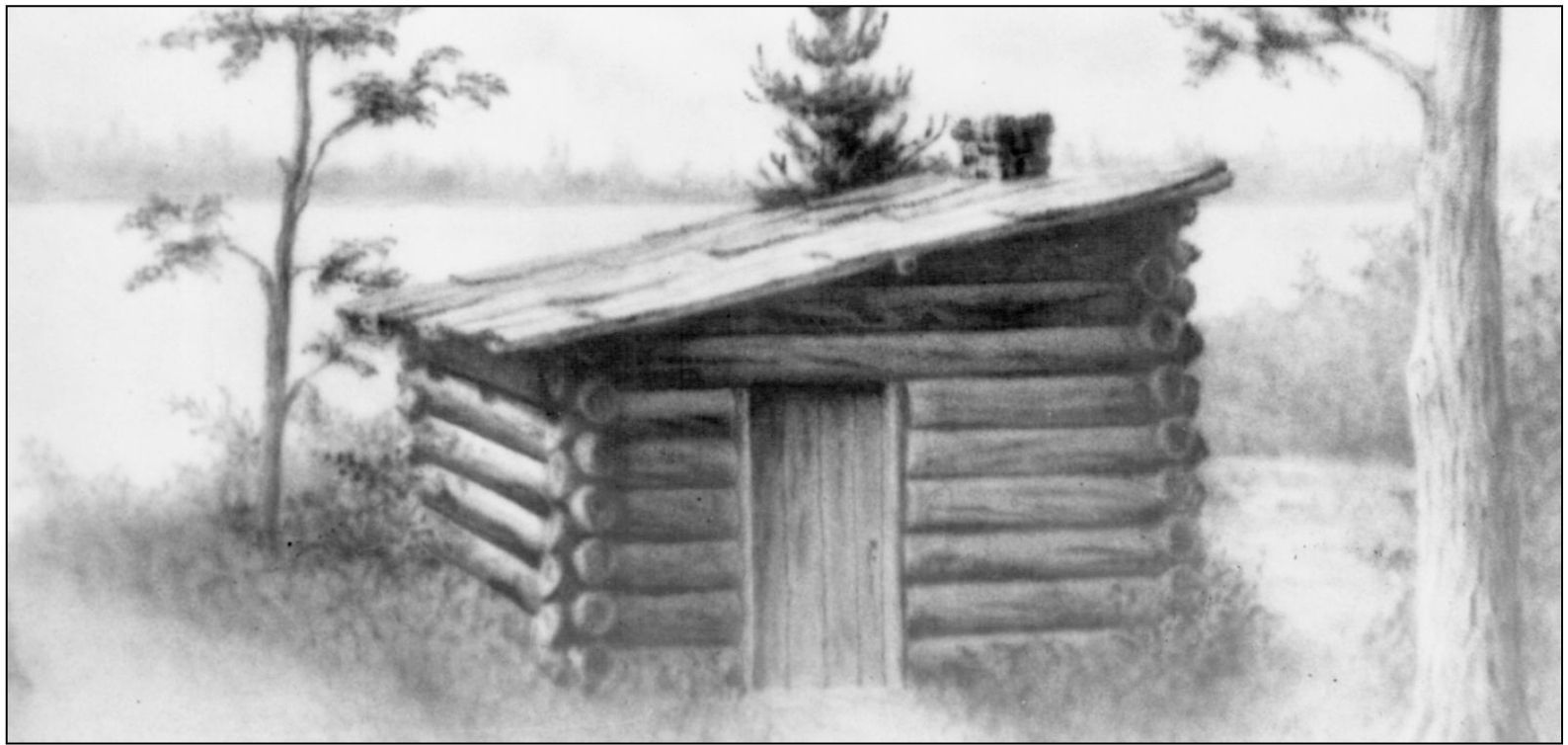
The Ponds cabin was located on the eastern shore of Lake Calhoun where Saint Marys Greek Orthodox Church now stands. This drawing of the cabin was based on the detailed descriptions later given by the Pond brothers. Gideon Pond described the cabin of oak logs, carefully peeled, as 12 feet wide by 16 feet long, with tamarack logs from a local grove holding up the roof. The cabin had one window, a gift of Major Lawrence Taliaferno, and a door with a lock. The cost of the cabin was one shilling, used for nails. Gideon Pond also recalled the early days of the cabin: the formal opening exercises consisted in reading of a section from the old book by the name of the Bible, and prayer to Him who was its acknowledged author. The banquet consisted of mussels from the lake, flour, and water. The site of the cabin itself had been selected by Cloudman. As Gideon Pond recalled, the reason he gave for the selection was that from that point the loons would be visible on the lake. The Ponds lived in the cabin until 1836. The cabin was torn down in 1839 and its materials used for fortifications during the ongoing Dakota-Chippewa conflicts. (Courtesy Minneapolis Public Library.)
Colonel William Kings Lake Calhoun Pavilion was built in 1877 at the bluff above what is now 35th Street and East Lake Calhoun Boulevard. King, one of the founders of the Minneapolis Tribune , owned large tracts of land in south Minneapolis and the Uptown area. The pavilion was later purchased by real estate magnate L.F. Menage and was turned into a hotel named the Lyndale. In addition to the attractions offered by the lake itself, visitors to the hotel could enjoy the dancing hall, billiards, and a wide variety of other pursuits. The fashionable resort hotel was destroyed by fire in 1888. (Courtesy Minneapolis Public Library.)

